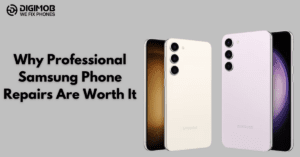
In the ever-evolving realm of smartphones, two giants stand tall, each with its legion of dedicated followers and unique ecosystem. Android, championed by a plethora of manufacturers, and Apple, the epitome of seamless integration, vie for supremacy in the competitive smartphone market. As users weigh their options, it’s crucial to dissect the pros and cons of each platform to make an informed decision. Let’s embark on a journey through the digital landscape and explore the distinct attributes that set Android and Apple phones apart.
Android: The Versatile Maverick
Pros:
- Customization Galore: One of Android’s standout features is its unparalleled customization options. Users have the freedom to tweak almost every aspect of their phone’s interface, from widgets and themes to launchers and icon packs. This flexibility allows for a personalized user experience that caters to individual preferences.
- Device Diversity: Android is not confined to a single manufacturer; it’s an open-source platform embraced by a multitude of phone makers. This results in a vast array of devices catering to various budgets and preferences. Whether you seek a budget-friendly device or a top-of-the-line flagship, Android has you covered.
- App Store Freedom: Unlike its counterpart, Android allows users to install apps from sources beyond the official Google Play Store. While this freedom comes with responsibility, it opens the door to a wider selection of apps and services.
- Multitasking Mastery: Android excels in multitasking capabilities. With split-screen functionality and the ability to run multiple apps simultaneously, Android provides a more versatile environment for users who demand productivity on the go.
- Affordability: Android smartphones often come with a diverse range of price points, making them accessible to a broader audience. Whether you’re a budget-conscious consumer or looking for a high-end flagship, Android offers options for every pocket.
Cons:
- Fragmentation Woes: The openness of Android comes at a cost – fragmentation. With numerous manufacturers releasing devices running different versions of the operating system, ensuring consistent updates across the ecosystem can be a challenge. This leads to a fragmented user experience and potential security concerns.
- Inconsistent User Interface: Android’s user interface can vary significantly between devices due to manufacturers implementing their skins and customizations. While this diversity allows for personalization, it can also result in a lack of consistency across the platform.
- Security Concerns: Android’s open nature makes it more susceptible to malware and security threats. Users must exercise caution when downloading apps from third-party sources, as the platform lacks the strict app review process employed by Apple.
Apple: The Ecosystem Maestro
Pros:
- Seamless Ecosystem Integration: Apple’s ecosystem is a symphony of interconnected devices, with iPhones seamlessly syncing with iPads, Macs, Apple Watches, and more. The integration is so flawless that users can start a task on one device and seamlessly continue it on another.
- Timely Updates: Apple’s closed ecosystem allows for a more streamlined update process. When a new iOS version is released, it’s available to all supported devices simultaneously, ensuring a consistent and up-to-date user experience across the board.
- App Store Curation: The App Store’s rigorous review process ensures that apps meet stringent quality and security standards before reaching users. This curation results in a more secure environment with a lower risk of malware and malicious applications.
- Consistent User Interface: Whether you’re using an iPhone, iPad, or Mac, the user interface remains consistent across Apple devices. This uniformity enhances user experience and simplifies the learning curve when transitioning between devices.
- Privacy Emphasis: Apple has positioned itself as a champion of user privacy. With features like App Tracking Transparency and Privacy Labels, users have more control over their data, and the company emphasizes safeguarding user information.
Cons:
- Cost Barrier: Apple’s devices are renowned for their premium quality, but this quality comes at a price. iPhones, especially the latest models, tend to have a higher upfront cost compared to many Android counterparts. This can be a deterrent for budget-conscious consumers.
- Limited Customization: While Apple’s closed ecosystem ensures a seamless experience, it also limits the extent of customization available to users. The iOS interface is more rigid, offering fewer options for personalization compared to Android.
- Dependency on Apple Services: To fully capitalize on the Apple ecosystem, users may find themselves dependent on Apple services. While this integration is excellent for those deeply entrenched in the ecosystem, it can be a drawback for individuals who prefer using third-party services.
Find your nearest Digimob Mobile Repair location https://digimob.com.au and connect with a team member to promptly resolve your water damage issues.
Conclusion: Finding Your Digital Fit
In the Android vs. Apple battle, there is no one-size-fits-all answer. Choosing between the two juggernauts depends on individual preferences, priorities, and budget constraints.
If customization, device diversity, and affordability top your list, Android emerges as the frontrunner. On the other hand, if you prioritize seamless integration, timely updates, and a meticulously curated app store, the Apple ecosystem may be your digital haven.
Ultimately, the decision boils down to personal preferences and how each platform aligns with your digital lifestyle. Whether you opt for the versatile maverick of Android or the ecosystem maestro of Apple, rest assured that both platforms offer a stellar smartphone experience, each with its unique flavor in the ever-evolving tech landscape.


